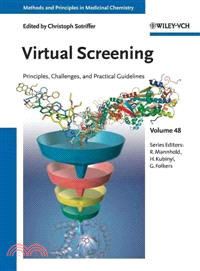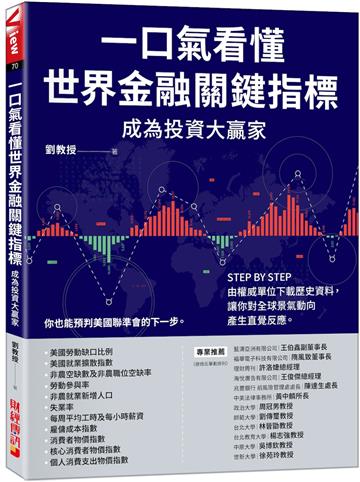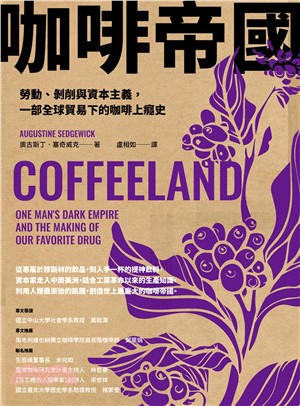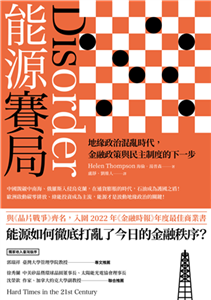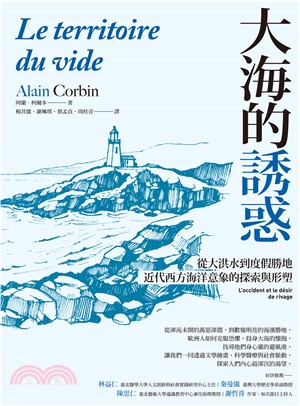Virtual Screening - Principles, Challenges Ad=Nd Practical Guidelines V48
商品資訊
系列名:Methods and Principles in Medicinal Chemistry
ISBN13:9783527326365
出版社:John Wiley & Sons Inc
作者:Sotriffer
出版日:2011/01/14
裝訂/頁數:精裝/550頁
商品簡介
Throughout, medicinal chemists from academia, as well as from large and small pharmaceutical companies report on their experience and pass on priceless practical advice on how to make best use of these powerful methods.
Unique in its focus on the end user, this is a real "how to" book that does not presuppose prior experience in virtual screening or a background in computational chemistry.
作者簡介
目次
Preface.
A Personal Foreword.
Part One Principles.
1 Virtual Screening of Chemical Space: From Generic Compound Collections to Tailored Screening Libraries (Markus Boehm).
1.1 Introduction.
1.2 Concepts of Chemical Space.
1.3 Concepts of Druglikeness and Leadlikeness.
1.4 Diversity-Based Libraries.
1.5 Focused Libraries.
1.6 Virtual Combinatorial Libraries and Fragment Spaces.
1.7 Databases of Chemical and Biological Information.
1.8 Conclusions and Outlook.
1.9 Glossary.
References.
2 Preparing and Filtering Compound Databases for Virtual and Experimental Screening (Maxwell D. Cummings, Éric Arnoult, Christophe Buyck, Gary Tresadern, Ann M. Vos, and Jörg K. Wegner).
2.1 Introduction.
2.2 Ligand Databases.
2.3 Considering Physicochemical Properties.
2.4 Undesirables.
2.5 Property-Based Filtering for Selected Targets.
2.6 Summary.
References.
3 Ligand-Based Virtual Screening (Herbert Koeppen, Jan Kriegl, Uta Lessel, Christofer S. Tautermann, and Bernd Wellenzohn).
3.1 Introduction.
3.2 Descriptors.
3.3 Search Databases and Queries.
3.4 Virtual Screening Techniques.
3.5 Conclusions.
References.
4 The Basis for Target-Based Virtual Screening: Protein Structures (Jason C. Cole, Oliver Korb, Tjelvar S.G. Olsson, and John Liebeschuetz).
4.1 Introduction.
4.2 Selecting a Protein Structure for Virtual Screening.
4.3 Setting Up a Protein Model for vHTS.
4.4 Summary.
4.5 Glossary of Crystallographic Terms.
References.
5 Pharmacophore Models for Virtual Screening (Patrick Markt, Daniela Schuster, and Thierry Langer).
5.1 Introduction.
5.2 Compilation of Compounds.
5.3 Pharmacophore Model Generation.
5.4 Validation of Pharmacophore Models.
5.5 Pharmacophore-Based Screening.
5.6 Postprocessing of Pharmacophore-Based Screening Hits.
5.7 Pharmacophore-Based Parallel Screening.
5.8 Application Examples for Synthetic Compound Screening.
5.9 Application Examples for Natural Product Screening.
5.9.10 Pharmacophore-Based Parallel Screening of Natural Products.
5.10 Conclusions.
References.
6 Docking Methods for Virtual Screening: Principles and Recent Advances (Didier Rognan).
6.1 Principles of Molecular Docking.
6.2 Docking-Based Virtual Screening Flowchart.
6.3 Recent Advances in Docking-Based VS Methods.
6.4 Future Trends in Docking.
References.
Part Two Challenges.
7 The Challenge of Affinity Prediction: Scoring Functions for Structure-Based Virtual Screening (Christoph Sotriffer and Hans Matter).
7.1 Introduction.
7.2 Physicochemical Basis of Protein–Ligand Recognition.
7.3 Classes of Scoring Functions.
7.4 Interesting New Approaches to Scoring Functions.
7.5 Comparative Assessment of Scoring Functions.
7.6 Tailoring Scoring Strategies in Virtual Screening.
7.7 Caveats for Development of Scoring Functions.
7.8 Conclusions.
References.
8 Protein Flexibility in Structure-Based Virtual Screening: From Models to Algorithms (Angela M. Henzler and Matthias Rarey).
8.1 How Flexible Are Proteins? – A Historical Perspective.
8.2 Flexible Protein Handling in Protein–Ligand Docking.
8.3 Flexible Protein Handling in Docking-Based Virtual Screening.
8.4 Summary.
References.
9 Handling Protein Flexibility in Docking and High-Throughput Docking: From Algorithms to Applications (Claudio N. Cavasotto).
9.1 Introduction: Docking and High-Throughput Docking in Drug Discovery.
9.2 The Challenge of Accounting for Protein Flexibility in Docking.
9.3 Accounting for Protein Flexibility in Docking-Based Drug Discovery and Design.
9.4 Conclusions.
References.
10 Consideration of Water and Solvation Effects in Virtual Screening (Johannes Kirchmair, Gudrun M. Spitzer, and Klaus R. Liedl).
10.1 Introduction.
10.2 Experimental Approaches for Analyzing Water Molecules.
10.3 Computational Approaches for Analyzing Water Molecules.
10.4 Water-Sensitive Virtual Screening: Approaches and Applications.
10.5 Conclusions and Recommendations.
References.
Part Three Applications and Practical Guidelines.
11 Applied Virtual Screening: Strategies, Recommendations, and Caveats (Dagmar Stumpfe and Jürgen Bajorath).
11.1 Introduction.
11.2 What Is Virtual Screening?
11.3 Spectrum of Virtual Screening Approaches.
11.4 Molecular Similarity as a Foundation and Caveat of Virtual Screening.
11.5 Goals of Virtual Screening.
11.6 Applicability Domain.
11.7 Reference and Database Compounds.
11.8 Biological Activity versus Compound Potency.
11.9 Methodological Complexity and Compound Class Dependence.
11.10 Search Strategies and Compound Selection.
11.11 Virtual and High-Throughput Screening.
11.12 Practical Applications: An Overview.
11.13 LFA-1 Antagonist.
11.14 Selectivity Searching.
11.15 Concluding Remarks.
References.
12 Applications and Success Stories in Virtual Screening (Hans Matter and Christoph Sotriffer).
12.1 Introduction.
12.2 Practical Considerations.
12.3 Successful Applications of Virtual Screening.
12.4 Conclusion.
References.
Part Four Scenarios and Case Studies: Routes to Success.
13 Scenarios and Case Studies: Examples for Ligand-Based Virtual Screening (Trevor Howe, Daniele Bemporad, and Gary Tresadern).
13.1 Introduction.
13.2 1D Ligand-Based Virtual Screening.
13.3 2D Ligand-Based Virtual Screening.
13.4 3D Ligand-Based Virtual Screening.
13.5 Summary.
References.
14 Virtual Screening on Homology Models (Róbert Kiss and György M. Keseru).
14.1 Introduction.
14.2 Homology Models versus Crystal Structures: Comparative Evaluation of Screening Performance.
14.3 Challenges of Homology Model-Based Virtual Screening.
14.4 Case Studies.
15 Target-Based Virtual Screening on Small-Molecule Protein Binding Sites (Ralf Heinke, Urszula Uciechowska, Manfred Jung, and Wolfgang Sippl).
15.1 Introduction.
15.2 Structure-Based VS for Histone Arginine Methyltransferase PRMT1 Inhibitors.
15.3 Identification of Nanomolar Histamine H3 Receptor Antagonists by Structure- and Pharmacophore-Based VS.
15.4 Summary.
References.
16 Target-Based Virtual Screening to Address Protein–Protein Interfaces (Olivier Sperandio, Maria A. Miteva, and Bruno O. Villoutreix).
16.1 Introduction.
16.2 Some Recent PPIM Success Stories.
16.3 Protein–Protein Interfaces.
16.4 PPIMs. Chemical Space and ADME/Tox Properties.
16.5 Drug Discovery, Chemical Biology, and In Silico Screening Methods: Overview and Suggestions for PPIM Search.
16.6 Case Studies.
16.7 Conclusions and Future Directions.
References.
17 Fragment-Based Approaches in Virtual Screening (Danzhi Huang and Amedeo Caflisch).
17.1 Introduction.
17.2 In Silico Fragment-Based Approaches.
17.3 Our Approach to High-Throughput Fragment-Based Docking.
17.4 Lessons Learned from Our Fragment-Based Docking.
17.5 Challenges of Fragment-Based Approaches.
References.
Appendix A: Software Overview.
Appendix B: Virtual Screening Application Studies.
Index.
主題書展
更多書展今日66折
您曾經瀏覽過的商品
購物須知
外文書商品之書封,為出版社提供之樣本。實際出貨商品,以出版社所提供之現有版本為主。部份書籍,因出版社供應狀況特殊,匯率將依實際狀況做調整。
無庫存之商品,在您完成訂單程序之後,將以空運的方式為你下單調貨。為了縮短等待的時間,建議您將外文書與其他商品分開下單,以獲得最快的取貨速度,平均調貨時間為1~2個月。
為了保護您的權益,「三民網路書店」提供會員七日商品鑑賞期(收到商品為起始日)。
若要辦理退貨,請在商品鑑賞期內寄回,且商品必須是全新狀態與完整包裝(商品、附件、發票、隨貨贈品等)否則恕不接受退貨。



